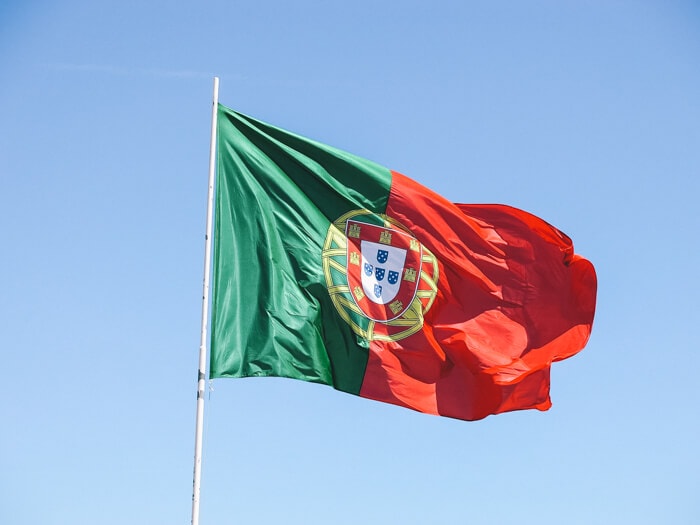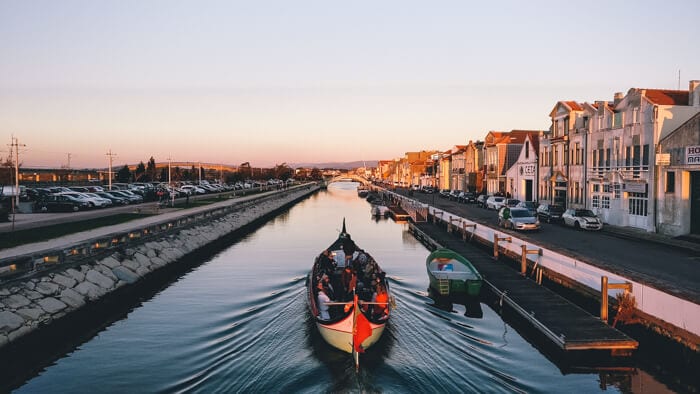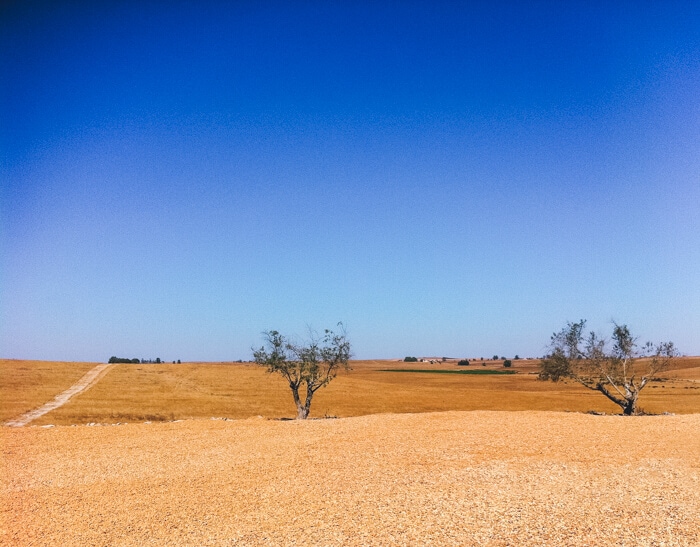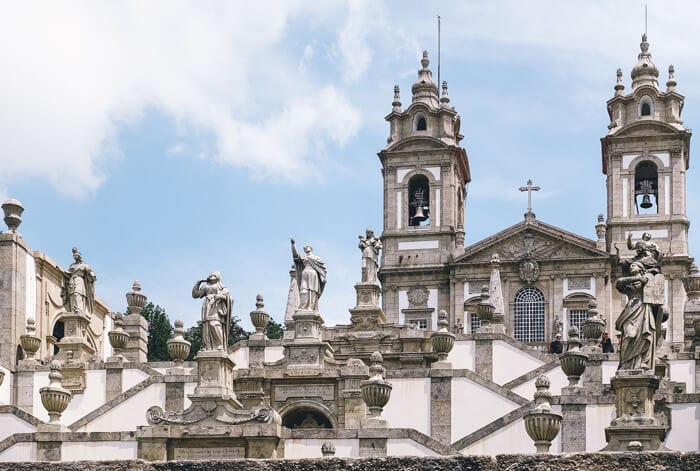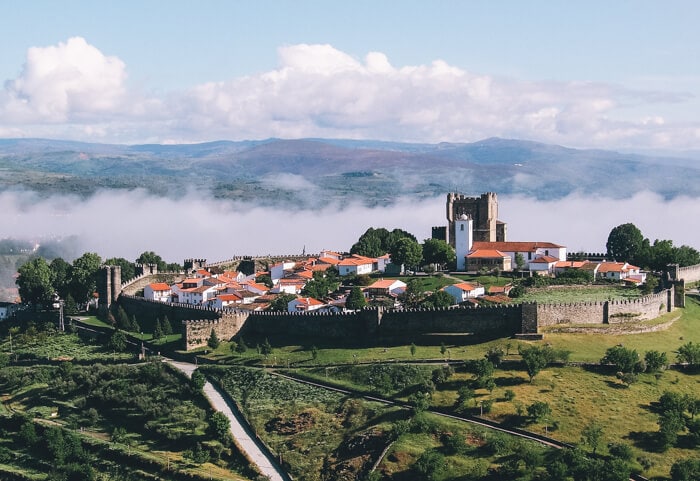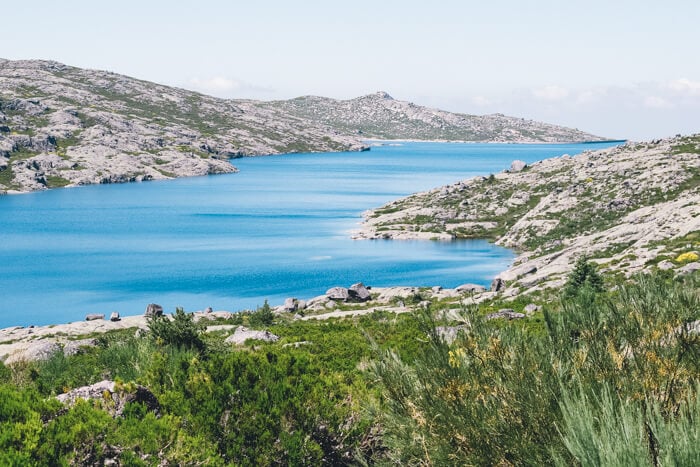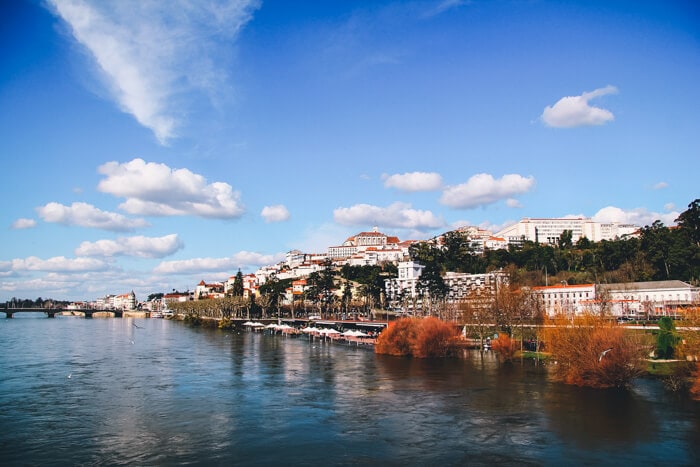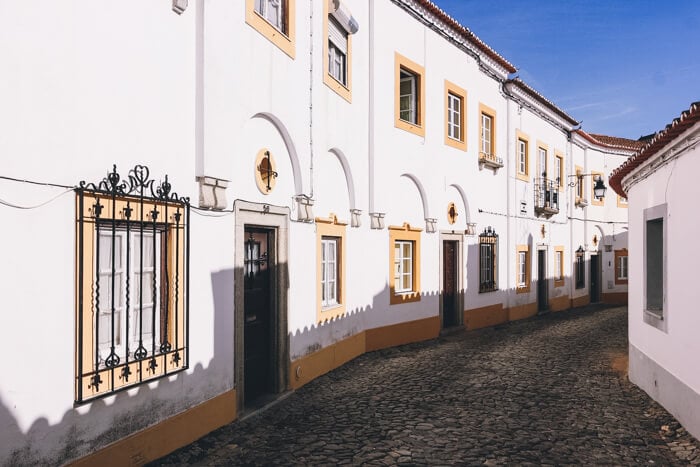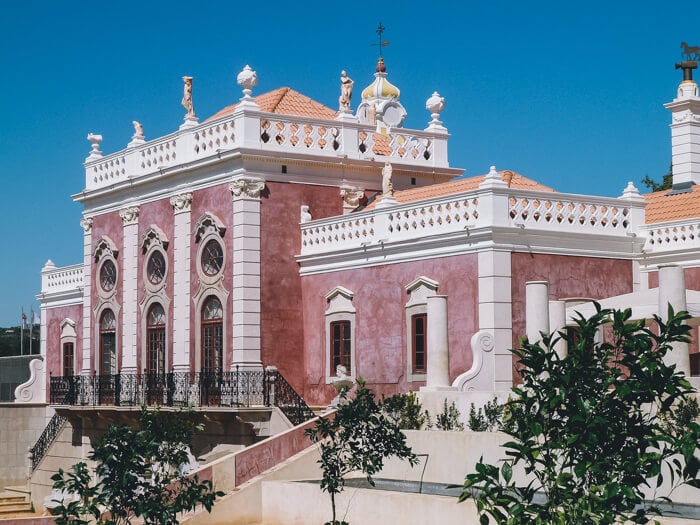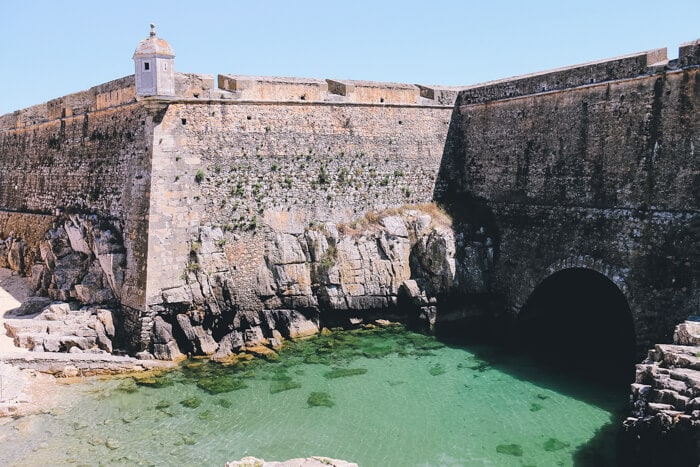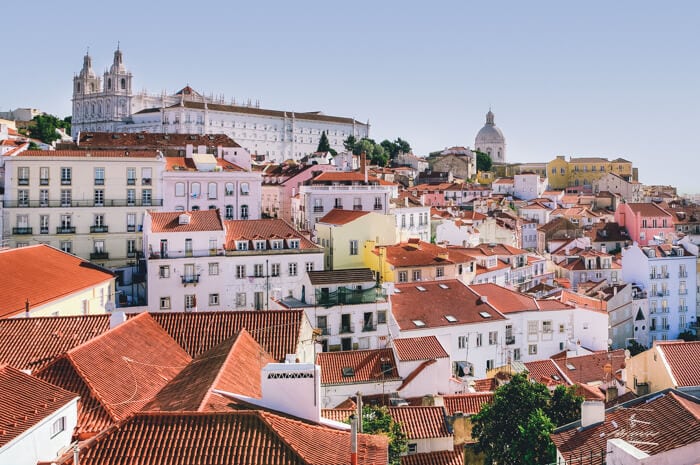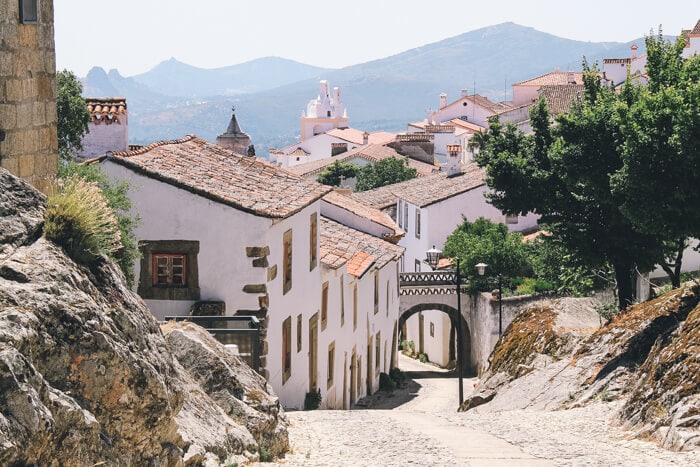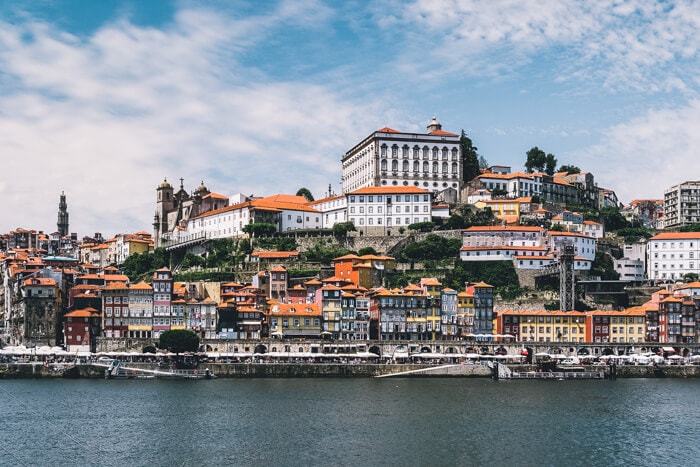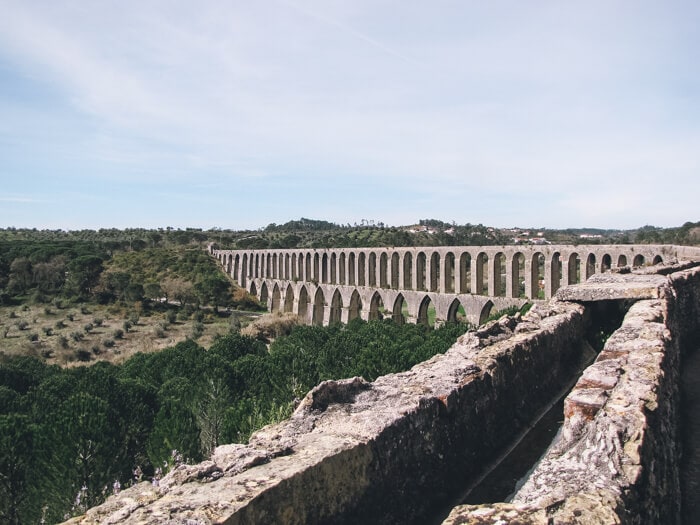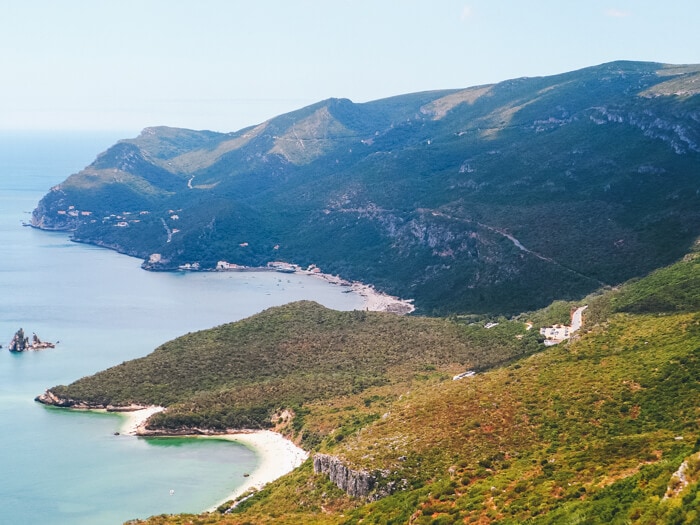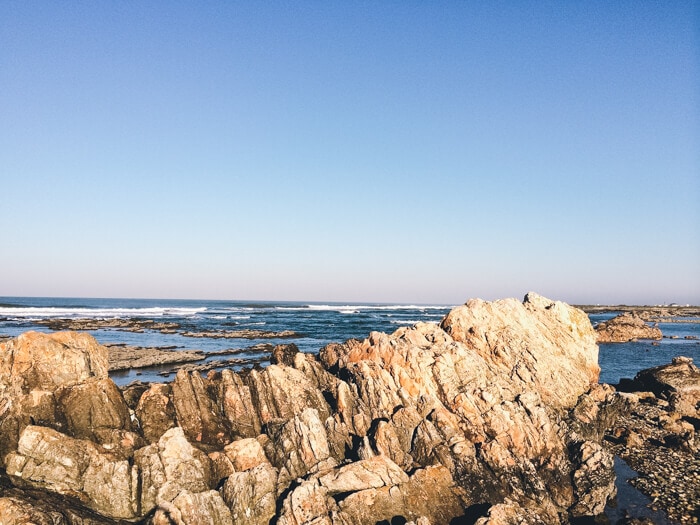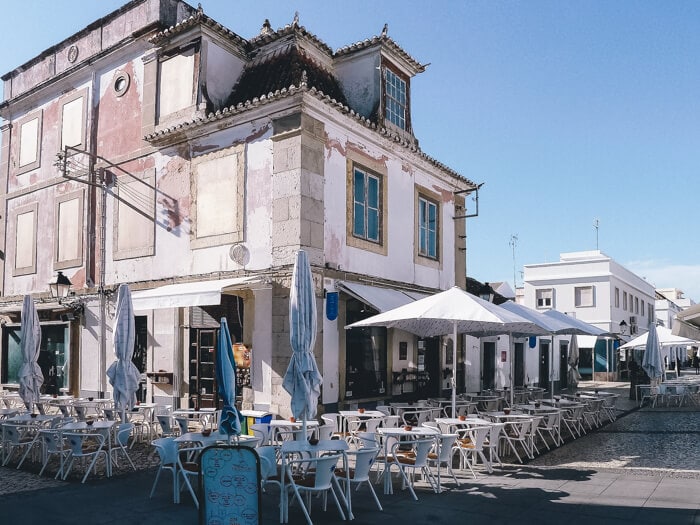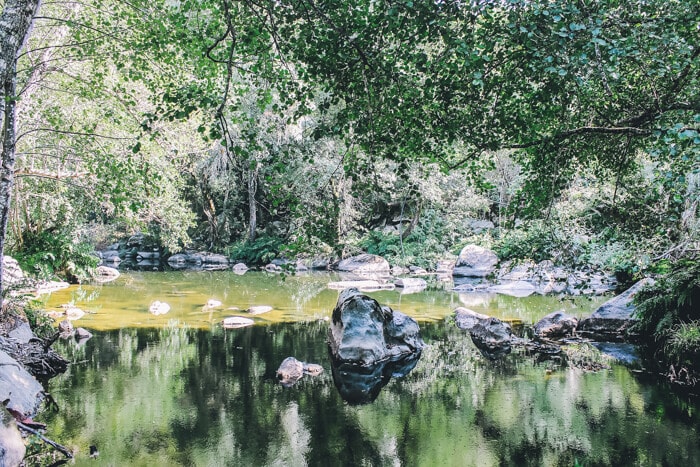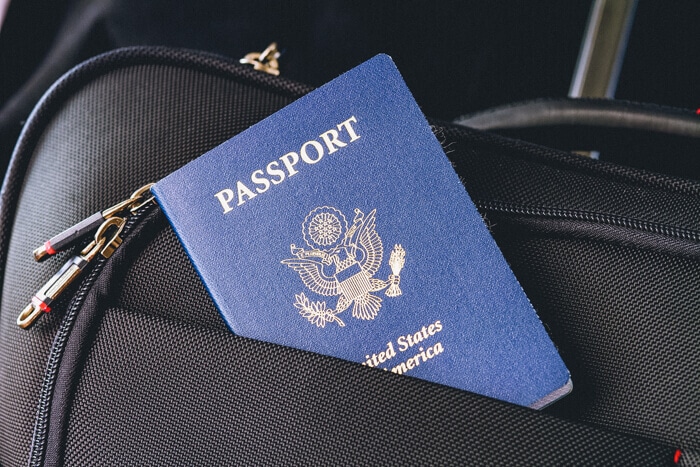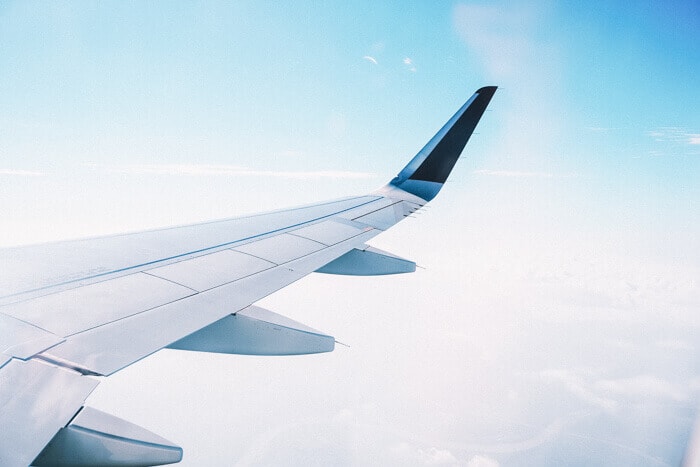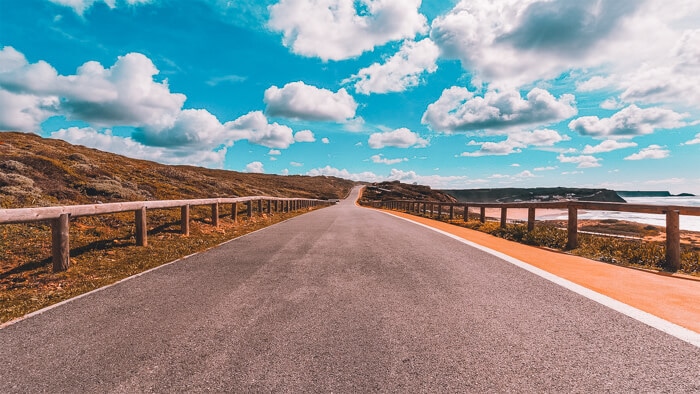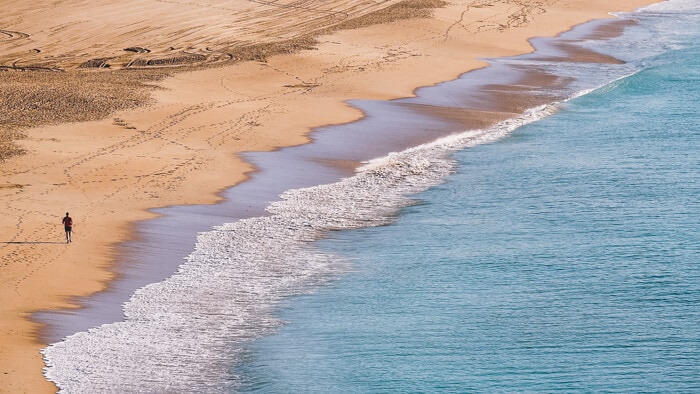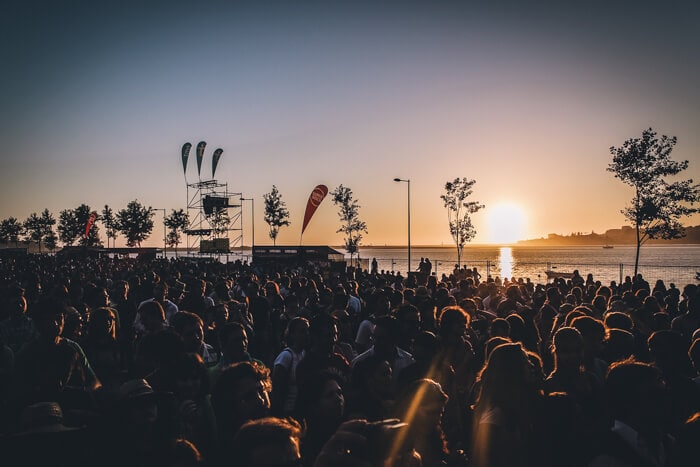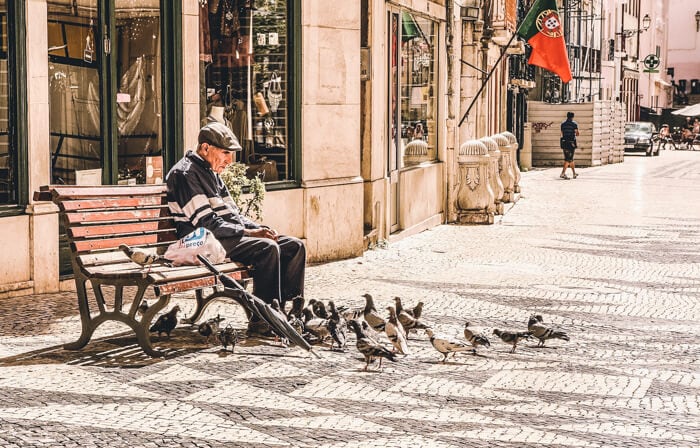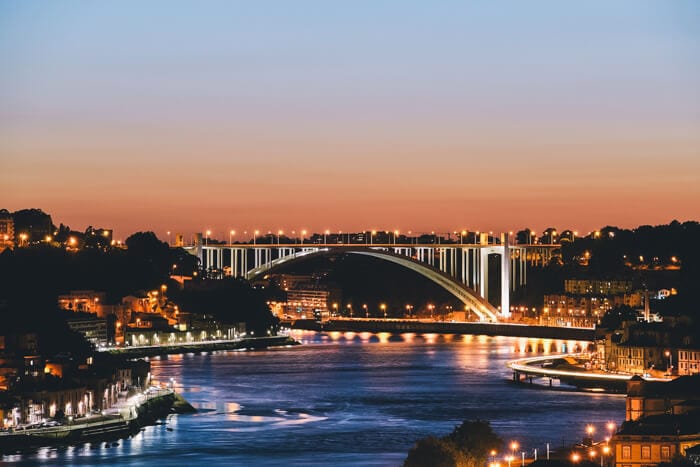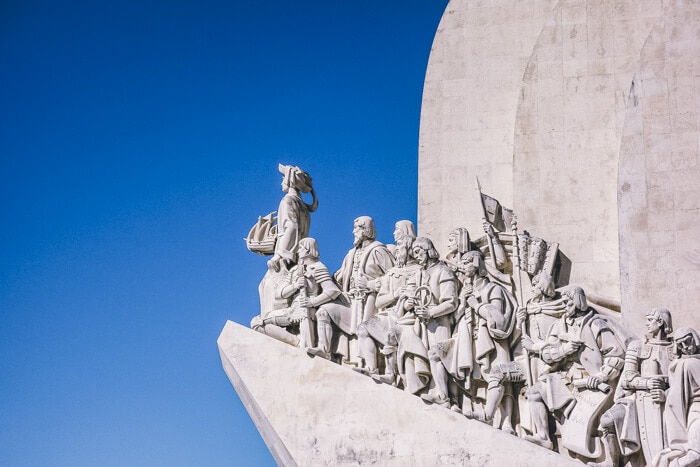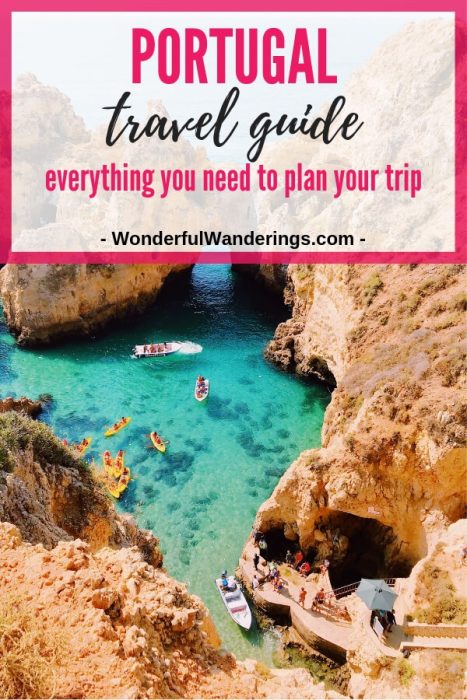It’s one of the oldest countries in Europe and many people plan holidays in Portugal every year. Famous for its charming towns, sunshine, beaches, and wine, of course. Experience medieval castles and history, its beautiful scenery makes it ideal for nature-lovers.
Portugal is located in southwestern Europe on the Iberian Peninsula. Officially the Portuguese Republic, it’s bordered to the west and south by the Atlantic Ocean and Spain to the north and east. The autonomous regions, the Azores and Madeira are apart of Portuguese’s territories. It’s a member of the European Union (EU), the United Nations (UN) and NATO.
Contents
- Holidays in Portugal: quick facts
- Districts of Portugal
- How to travel to Portugal
- How to travel within Portugal
- What to pack for Portugal
- The best time to visit Portugal
- What to eat in Portugal
- Famous events in Portugal
- Public holidays in Portugal
- Cultural customs to be aware of in Portugal
- Where to stay in Portugal
- Don’t forget travel insurance
- Basic phrases and their pronunciation
- Is it safe to travel to Portugal?
- The use of cash and cards in Portugal
- Calling abroad, WiFi and data use in Portugal
- Tipping in Portugal
- A brief history of Portugal
- Posts about Portugal
Holidays in Portugal: quick facts
Size: 92,212 km² or 35,603 sq mi
People living there: more than 10,427,000
Capital: Lisbon
Governmental structure: the government is one of four sovereignty bodies of the Portuguese Republic with the President of the Republic, the Assembly of the Republic, and the courts.
National day: June 10
Time zone: Western European Time / UTC / GMT for Madeira and mainland Portugal, UTC-1 / GMT-1 for the Azores
Currency: euro (EUR)
Power voltage and socket type(s): 230V, plug types F and C. If these plug types don’t match your devices, make sure to bring a universal adapter.
Official religion(s)/Freedom of religion: Freedom of religion. 80% of the population is Roman Catholic, followed by non-religious citizens and other Christians.
Official language(s) and general knowledge of English: Portuguese is the official language. English is widely spoken, especially in urban areas.
Drives on this side: right
International driver’s licence accepted? yes
Phone code: +351
Vaccinations needed? no
Can you drink the tap water? yes, so bring your reusable water bottle
Want more quick facts about Portugal? Check out my post of interesting facts about Portugal.
Districts of Portugal
Portugal is divided into 18 districts and each area has a civil governor who is a local delegate of the Central Government of Portugal. The Portuguese autonomous regions of the Azores and Madeira aren’t divided into districts.
1. Aveiro
The postcard-worthy region is filled with colorful gondola-shaped boats, natural lagoons, and traditional cobbled streets. The regional capital city of Aveiro is crossed by a canal which has given it its nickname of the ‘Portuguese Venice’. Make sure to see the traditional fish market, Mercado do Peixe, you can find a number of incredible seafood restaurants in the area. Popular museums to visit include the Vista Alegre Museum, Aveiro Museum, and the Ílhavo Maritime Museum.
2. Beja
Situated in southern Portugal, Beja is the perfect destination to experience Portugal’s natural beauty. Think charming towns and villages reflective of the Moorish occupation. With dramatic cliffs and practically untouched beaches, the weather is usually warm and dry, perfect for a relaxing holiday. During the summer months, there are concerts and music festivals attracting big crowds.
3. Braga
In the northwest of Portugal, Braga is surrounded by a rolling landscape filled with mountains and forests. The city of Braga has a number of churches, parks and gardens dotted throughout. Some of the best sites to visit include the Sé Cathedral, the archaeological site Citânia de Briteiros and the ruins of Bracara Augusta.
4. Braganca
Situated in the northeast corner of the country, bordering Spain, the district capital is Braganca. Easily the most remote part of mainland Portugal, expect rolling hills and a slower pace of living. You can still see ancient stone houses throughout small villages in the medieval town of Braganca. The castle of Braganca still stands tall from the 12th century and is a must-visit for history-buffs.
5. Castelo Branco
In central Portugal, the Castelo Branco district is a capsule of some of the country’s oldest traditions. Experience real culture and indulge on the region’s internationally renowned cheese, olive oil, and wine. The village of Monsanto can be found in the region and is considered a true Portuguese village with traditional architecture and charming passages. Visit Serra da Estrela, Portugal’s highest mountain range. Its national park is one of the top destinations in the country for skiing.
6. Coimbra
Considered Portugal’s cultural center, Coimbra is a beautiful destination. Situated on the Modego River, the historic city of Coimbra features some of the regions best monuments. The popular Pequenitos theme park can be found in the area and is a great way to keep the whole family entertained. Make sure to visit the Santa Cruz Church and the ruins of the Santa Clara-a-Velha Monastery.
7. Evora
The capital city, Evora, is an incredible place to explore. The historic city has traces of different eras with medieval streets and cobbled paths. There’s a number of cafes and excellent restaurants to try out some Portuguese delicacies. Wander around the Temple of Diana or explore the Chapel of Bones, where hundreds of exposed bones can be seen on its walls.
8. Faro
Faro is located in Portugal’s southernmost region in the Algarve. The city of Faro is a great gateway to the Ria Formosa nature park with natural lagoons and mudflats. A scenic location, you’ll find historic monuments, shopping, and open-air cafes to spend your days in.
9. Guarda
Located in the central region of Portugal, the district capital lies in the mountainous landscape of Serra da Estrela. Considered the highest city in the country, Torre is the highest peak. The mountain villages of Seia and Manteigas are great places to visit all year round, whether you prefer a spring hike or skiing down snow-covered hills. The Guarda Cathedral and the Guarda Museum are popular tourist spots.
10. Leiria
Located inland from the coast, the district is home to a number of unique towns and attractions. The town of Peniche is a popular deep sea-fishing spot with seafood restaurants and regular ferry trips to the Berlenga Islands. Another place to visit is the city of Caldas da Rainha, famous for its traditional ceramic crafts.
11. Lisbon
The Lisbon district stretches along the Atlantic coast and is home to Portugal’s capital, Lisbon. The hilly city is well known for its cafe culture, vibrant nightlife, and thriving music scene. With sweeping views and charming streets, there’s plenty to keep you busy in the region. You can easily spend a week just exploring the city. If you want to visit a lot of sights and use public transportation, it might be a good idea to get the Lisboa Card.
For restaurants and shopping, head to the Baixa neighborhood. Visit the Avenida da Liberdade, a beautiful avenue full of cafes and gardens. Other top places to visit include the Avenida da Liberdade, Sintra UNESCO World Heritage Site and St George’s Castle.
12. Portalegre
Tucked away in the countryside is the sleepy district of Portalegre. You can find Baroque architecture, medieval castles, and interesting archaeological sites. Each town in the region has its own story so be sure to explore a few of the smaller towns. The town of Marvão is one of the few remaining towns that’s nestled inside ancient walls.
13. Porto
Located on the north-west coast of Portugal, the district capital is the city of Porto. The second biggest city in Portugal, expect a coastal oasis that you’ll never want to leave. In Porto, one of the most popular neighborhoods is Ribeira. It’s filled with restaurants, cafes and stunning buildings. Porto’s seafronts are not to be missed. Spend your day at one of the many beaches or take a romantic stroll down Pergola do Foz.
If you’re planning to visit some museums or other sights in Porto, it’s a good idea to get the Porto Card. It’ll help you save some money.
14. Santarem
The capital, Santarém, is home to several unique churches and the Jardim das Portas do Sol, a garden enclosed by the city’s medieval walls. Near the city of Tomar, you can find the Castelo de Bode dam. Here you can enjoy walks, canoeing, fishing and water sports. Other things to do include visiting The Castle Garden and the Abrantes Fortress.
15. Setubal
The Setubal district is a good base for holidaying in the Lisbon region. You can enjoy the beautiful scenery without the hustle and bustle of the city. Situated about 30 km from Lisbon, you can easily reach the picturesque towns of Sal, Grândola, and Palmela. During the 15th century, Setúbal became a popular retreat for aristocrats.
16. Viana do Castelo
The capital, Viana do Castelo is a lively fishing port known for its gorgeous architecture. Located at the mouth of Lima River. Enjoy Cabedelo beach just across the Lima estuary. The region’s history, culture, and charm are major draws for visitors. Although it’s quieter, there are many religious festivals that are held in this area throughout the year.
17. Vila Real
In the foothills of Serra do Marão, you’ll find the region’s capital Vila Real. The small yet lively city was originally founded by King Dinis in 1289. If you’re looking to explore the Duoro River, then the city is an ideal base. You’ll find quaint towns and villages dotted throughout the region boasting excellent wine and cheese.
18. Viseu
If you’re a wine-lover, then this is the place for you. Viseu is known for its red wines and culinary delights. Situated halfway between Porto and Coimbra. To find the districts best attractions, head to the city of Viseu. The historical Adro da Se square is in the center with the Renaissance art museum nearby. For complete relaxation, try the hot springs São Pedro do Sul and enjoy nature at its best.
How to travel to Portugal
Entry requirements
Visitors to beautiful Portugal need a passport valid for at least three months. If you’re traveling from one border-free Schengen country to another then EU nationals do not need to show a passport.
US and Australian nationals can travel to Portugal without a visa for up to 90 days. EU nationals can stay for an unlimited amount of time but will need to register with local authorities after three months.
Getting to Portugal
By plane
Traveling by air is the quickest way to reach Portugal and the best option if you’re coming from further afield. Portugal has three international airports, Lisbon, Faro, and Porto. The main airport, Lisbon, is the 22nd largest airport in Europe by passenger traffic. Porto is the second busiest airport in Portugal followed by Faro Airport.
Look here for flight options and prices to Portugal.
By bus
You can reach Portugal from Spain directly by bus. Traveling from Madrid to Lisbon is a cost-effective way to travel with the journey taking about nine hours. Bus companies to travel with include Alsa, Eurolines, and Flixbus.
Look here for bus routes into Portugal.
By train
Lisbon’s central train station, Gare do Oriente connects Portugal’s capital city with neighboring Spanish cities. From Madrid, the overnight train takes just under 11 hours with very reasonable prices. In northwestern Spain, there are daily trains connecting Vigo in Galicia to Porto.
Look here for train routes and prices to Portugal.
By ferry
You can reach Portugal by ferry from Spain. Weekly ferries come from Las Palmas and Tenerife. This isn’t the cheapest or quickest way to reach Portugal, though.
Look here for ferry routes and prices into Portugal.
How to travel within Portugal
Independent travel around Portugal
You can get almost everywhere relatively easily throughout Portugal by train or bus. Regional train lines are usually cheaper and some of the journeys are very scenic, especially the Douro line from Porto to Pochinho. However, if you’re looking for speed then it’s usually quicker to go by bus.
The bus connects the majority of the country’s towns and villages with Rede Expressos offering a daily service to destinations across the country.
Driving is the best way to travel in Portugal if you want full flexibility as it allows you to visit more out-of-the-way places that you wouldn’t normally be able to visit in a short amount of time. The Portuguese highway network is good and car rental is fairly inexpensive. Expat in Portugal Julie has some great tips for renting a car in Portugal.
What to pack for Portugal
Portugal is one of the warmest European countries with four seasons spring, summer, winter and fall. The climate is temperate with a heavy influence from the Atlantic Ocean. In the summer, it’s usually sunny everywhere but a few weather fronts can affect northern regions so it’s best to take that into account when planning a trip to Portugal.
It can be wet and rainy during the autumn and winter seasons, but spring and summer can see temperatures hit as high as 40°C. From June to mid-September, Portugal’s summers are warm, sunny in the south and center, and much more mild on the northern coast. In general, the mountainous regions in the north are cooler and wetter while Lisbon, Alentejo, and Algarve have long, hot summers with high temperatures.
What to pack for Portugal in summer
- a reusable water bottle
- good walking sandals
- sneakers
- light clothing
- a light sweater for the evenings
- sunscreen
- sunglasses
- swimwear
- aftersun lotion
- comfortable light hiking trousers
What to pack for Portugal in winter
- a reusable water bottle
- a warm scarf
- sneakers
- layered clothing
- a long, warm, wind and waterproof coat
- merino woolen socks
What to pack for Portugal in fall and spring
In fall and spring, you’ll most likely need a lightweight, warm and waterproof coat. Also make sure to pack layers and bring comfortable sneakers.
The best time to visit Portugal
Late spring might just be the best time to travel to Portugal and in general, both spring and autumn are good moments. So, from March to May and September to October. During these times, the sun is still out, the country is in bloom and the weather is warm.
Summer in Portugal can get very hot with lots of crowds around the main tourist spots. As a number of Portuguese head to the beach during the summer, you should experience fewer crowds by avoiding this time.
The winter, although colder, still has a decent amount of sun. A lot of beach resorts wind down during the winter so if you plan on heading to the beach, this is something to keep in mind. Portugal has events year-round including Festas de Lisboa in June and the MEO Sudoeste music festival in August.
What to eat in Portugal
- Alheira de Mirandela – a type of fowl sausage
- Bacalhau – a dish consisting of onions, olives, egg, parsley, and cod
- Caldeirada de Enguias – eel stew seasoned with saffron and served with peppers
- Cataplana de Marisco – seafood stew served with chips or rice
- Francesinha – two slices of bread with steak, sausage, ham, and chorizo covered in melted cheese and a tomato sauce
- Bifana – thin slices of pork marinated in white wine then fried and served in a bun
- Arroz de marisco – clams, seafood and prawns cooked with rice, vegetables, and herbs
- Pasteis de Nata – golden puff pastry circle with a rich egg custard in the middle. Check out where to have pasteis de nata in Lisbon
- Polvo à lagareiro – steamed octopus with baked potatoes and garlic, covered in olive oil
- Piri Piri Chicken – char-grilled or spit-roasted chicken usually served with chips and a salad
Famous events in Portugal
- Carnaval, Funchal (March) – the huge party hits the island in late winter and is one of the world’s best carnivals with a two-hour long procession.
- Fim do Ano, Funchal (December) – a massive fireworks display that can be seen over the entire city.
- Festival de Estoril Lisboa, Cascais (July) – the festival brings together classical and jazz concerts in the summer.
- Semana Santa, Braga (Easter) – Easter celebrations in Portugal with music, processions and the Easter Vigil Mass.
- Festa de São João, Ribeira (June) – the city is filled with music, competitions, and parties for one night only in June.
- Festa dos Tabuleiros, Tomar (June/July) – the week-long celebration includes music, dancing, drinking and fireworks and is held every four years.
- Festa de São Pedro da Afurada, Porto (June) – the fishing village of Afurada dresses in traditional clothing with parades through the streets.
- Rock in Rio – Lisboa, Lisbon (May) – one of the world’s largest music festivals heads to the capital every other year.
- NOS Primavera Sound, Foz do Douro (June) – a massive indie music festival which brings in world-class headliners over the weekend. Previous acts include Lorde and the Bad Seeds.
- Mercado Medieval, Óbidos (July/August) – a two-week medieval fair held inside the castle grounds including live music and jousting events.
Public holidays in Portugal
If you want to set out to discover Portugal, make sure to check both national and regional public holidays as a lot will be closed on those days.
- New Year’s Day
- Good Friday
- Easter
- Freedom Day (April 25)
- Labour Day (May 1)
- Portugal Day (June 10)
- Corpus Christi
- Assumption Day
- Republic Day (October 5)
- All Saints’ Day
- Restoration of Independence (December 1)
- Immaculate Conception Day
- Christmas Day
Cultural customs to be aware of in Portugal
Portugal is an easy country to travel with welcoming people. There are no solid rules to follow but there are a few things that will help you while visiting. An air kiss on both cheeks is the usual greeting with women and mixed company. Taking photos of a church during mass would be considered inappropriate.
One thing to remember is that when appetizers are bought over at the beginning of a meal such as bread or olives, they may appear free but will be added to your bill. A polite ‘no thank you’ is enough if you don’t want it.
Where to stay in Portugal
Booking.com is my go-to place for booking hotels, guest houses and bed and breakfasts for my travels. It has a bunch of filtering options so I can easily get a list of only the hotels that meet my criteria. If you’re looking for accommodation in Portugal, I highly recommend you check there.
Sometimes I rather stay at an apartment and then I use Airbnb.
Don’t forget travel insurance
No matter how well you plan and research a trip, there are always things that happen beyond your control. Something might get canceled, you can get ill or hurt while traveling or one of your electronics might break or get stolen. When misfortune strikes, travel insurance has got you covered. I’ve had ongoing travel insurance ever since I started traveling to make sure I’m covered for every trip I go on. Don’t have insurance yet? You can get a free quote here:
Basic phrases and their pronunciation
Good morning
Good evening
How are you?
I’m well, and you?
Please
Thank you
You’re welcome
Yes
No
I’m Sorry
Excuse me
I don’t understand
Do you speak English?
How much is… ?
Where is… ?
The bill, please
May I please have…
/
When?
Bom dia (bom dee-ah)
Boa tarde (bo-ah tar-deh)
Como está? (ko-mo es-tah)
Eu estou bem, e tu? (eu es-tou behm, eh too?)
Por favor (por fa-vor)
Obrigado (ob-ree-gah-doh)
De nada (de na-dah)
Sim (sim)
Nao (naoum)
Desculpa (des-kool-pah)
Com licença (kom lee-sen-sah)
Não compreendo (naoum kom-preh-en-doh)
Fala inglês? (fa-la in-gles)
Quanto custa… ? (kwan-toh kos-tah)
Onde é… ? (ond-jeh eh)
A conta, por favor (a koh-tah por fa-vor)
Pode dar me…, por favor? (pod-je dar meh por fa-vor)
Quando? (kwan-doh)
Is it safe to travel to Portugal?
Portugal is listed as the world’s 4th safest country according to the Global Peace Index. Portugal is considered safe to travel with a low crime rate. Petty crime and theft such as pickpocketing or bag-snatching can be a problem in heavily crowded and high-tourist areas as well as bus and subway stations.
When you head to the beach, remember to keep an eye out for warning flags to avoid any strong oceanic currents that could be dangerous. Use basic common sense and take precautions as you would in any other place.
The use of cash and cards in Portugal
Many shops, restaurants, and museums will take cards with Visa and MasterCard being widely accepted. Keep some cash on you as well as small shops, street kiosks, bars, and buses may not accept cards for small transactions. There are ATM’s throughout the country so you shouldn’t run into any problems withdrawing money during your visit.
Calling abroad, WiFi and data use in Portugal
Those with a SIM card from an EU country don’t have to pay roaming charges when calling, texting, or using data in Portugal. The same goes for some global phone plans.
If you don’t have a EU SIM but still want to have unlimited WiFi, check out Solis Wifi.
Skyroam offers both day passes and monthly subscriptions providing you with 4G throughout your trips. I’ve been using their daily passes not just when I travel outside the EU (no roaming charges for me in the EU) but also as a backup for when I think I’ll go over my phone’s data plan.
Check out Solis Wifi here.
Tipping in Portugal
Tipping isn’t mandatory in Portugal but it is expected in touristy places such as Lisbon and Porto. Away from the tourist hotspots, it isn’t expected but it isn’t frowned upon either. these guidelines give you a good idea of who to tip what in Portugal.
A brief history of Portugal
Human settlers lived in Portugal in the middle of the Ice Age about 30,000 BC. The Portuguese were originally hunters and fisherman. At around 700 BC, the Celts were the first people to invade and conquer Portugal. Over the centuries, Portugal was occupied by the Romans, Phoenicians, Visigoths, and Moors. The São Jorge Castle in Lisbon was built during the Moorish era.
Portugal saw a relatively peaceful time until the 11th century. The Moors were driven out by King Ferdinand I of Leon and Castile. They were declared an independent nation in 1143. In 1255, Lisbon became the nation’s capital and later on the first university was built in the city.
During the 14th and 15th centuries, Portugal grew massively into one of the world’s most powerful maritime nations with colonies in Brazil, Malacca, Goa, and Macau. King Philip II of Spain declared himself king of Portugal during the late 16th century. Portugal lost its dominance over the Asian spice market to the Dutch in the 1700s but its fortune continued to grow following gold and diamond discoveries in Brazil.
In 1755, a devastating earthquake resulted in a tsunami completely destroying much of Lisbon and killing thousands of people. The British helped to keep Napoleon’s forces at bay during this time, while the Portuguese could rebuild. Portugal’s last reigning monarch, King Manuel II went into exile in 1910 and was replaced with a democratic republic government.
The dictator António de Oliveira Salazar came into power and remained until 1968 when he was succeeded by Marcello Caetano. The Caetano government was later overthrown in a coup in 1974 known as the Carnation Revolution. Democracy was restored in Portugal and it has been a modern free nation since.
Today, Portugal is known for its olives, wines, sun, and beaches. A founding member of NATO, Portugal has evolved into a stable democracy with a vibrant culture.
Posts about Portugal
And that’s it! I hope these Portugal travel tips will help you plan your own trip there.
Safe travels!
PIN FOR LATER
This guide contains affiliate links. If you book or buy something through these links, I earn a small commission at no extra cost to you.

